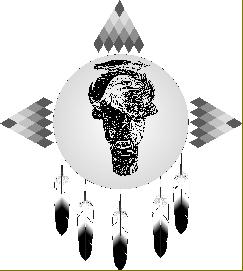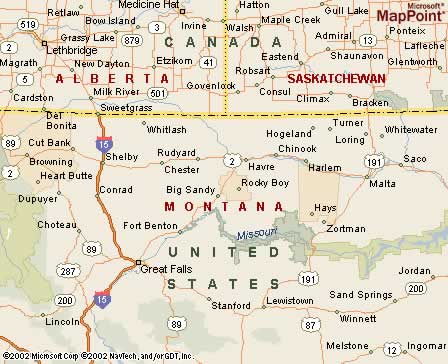|
|
Canku Ota |
|
|
(Many Paths) |
||
|
An Online Newsletter Celebrating Native America |
||
|
February 21, 2004 - Issue 107 |
||
|
|
||
|
Instructors set their sights on Cree History |
||
|
by Jerome Tharaud - Havre
(MT) Daily News
|
||
|
credits: graphic"
Stone Child College logo
|
|
The Crees were one of two peoples that combined to form the Chippewa Cree Tribe. The tribe's government is located on Rocky Boy's Indian Reservation, which was created in 1916. Aided by two federal grants, the instructors are hoping to learn more about Cree history from written documents, pictures, newspaper articles, songs and oral history. "I don't know what all we're going to get ourselves into, but hopefully whatever we can get a hold of," said Robert Murie, an instructor of Native American history at Stone Child College. Murie said he and Matt Herman, an instructor in the college's liberal arts program, will probably take a two-week road trip in June to collect the materials. Murie said the decision to look for Cree materials first, rather than Chippewa, was in part because Cree is the dominant language on the reservation, and also because historical information about the Cree is scarce at Rocky Boy. "There's hardly any Cree history here on the reservation. Hopefully there'll be (a project) for the Chippewa too, because we want our children to know about both," Murie said, adding that if they come across pieces of Chippewa history, they'll try to bring that home as well. Herman said he is not an expert on tribal history, but his understanding is that today's tribe was composed of multiple groups migrating at different times. "To do it justice, you have to study those things separately, but then together too. We just felt that it was going to be a start," Herman said. In addition to looking for written and visual materials, Herman said he and Murie plan to conduct oral history interviews with elders living on the reservation as well as those living in Canada along the path the Southern Cree once took to come to Montana. "There's people stretched all along that route ... that would have a lot of things to contribute to their history," Herman said, adding that he would like to videotape the interviews, and possibly make a documentary of the trip. Herman said he would also like to look at the archives of newspapers around the state to trace the path of the Cree and Chippewa in Montana before they settled at Rocky Boy. "These people wandered all around Montana for years, from what I understand, before they were located here," Herman said. "We wanted to try to gather as many newspaper accounts as possible from the early part of the 20th century." The trip, funded by two $25,000 grants from the National Endowment for the Humanities, will probably start in Saskatoon, Saskatchewan, Murie said. There they will visit history scholars at the Saskatchewan Indian Federated College who have accumulated a lot of information about Cree history, Herman said. Then they hope to visit the Glenbow Museum in Calgary, as well as a museum in Edmonton, Alberta, the Montana Historical Society in Helena, and the Newberry Library in Chicago, Murie said. Herman said the library is "the foremost Indian library in the country." The trip will take some planning this spring. "We're going to be calling them and then making arrangements," Murie said. "I don't know how long it will take us to collect this documentation. Hopefully at least one or two days each (place)," he added. Murie said they hope to make copies of pictures and documents the museums have, and then archive them on the reservation. Another goal of the project is to help the college develop its history curriculum, Herman said. The college offers some history courses, he said, but not very often. The historical materials would provide more information that could be incorporated into the curriculum. "We felt it was important to try to get the history of the people a more prominent place in the curriculum," Herman said. Collecting the materials this summer will only be the first half of the project, Herman said. In the summer of 2005, they will use the information they gathered to begin developing exhibits and curricula. "It is exciting, and I think it's real important," Herman said. "And I hope we're able to increase the interest in this area, and that it can be the beginning of something pretty good for the college and the community." |
|
|
www.expedia.com |
|
|
||
|
|
||
| Canku Ota is a free Newsletter celebrating Native America, its traditions and accomplishments . We do not provide subscriber or visitor names to anyone. Some articles presented in Canku Ota may contain copyright material. We have received appropriate permissions for republishing any articles. Material appearing here is distributed without profit or monetary gain to those who have expressed an interest. This is in accordance with Title 17 U.S.C. Section 107. | ||
|
Canku Ota is a copyright © 2000, 2001, 2002, 2003, 2004 of Vicki Lockard and Paul Barry. |
||
 |
 |
|
|
The "Canku Ota - A Newsletter Celebrating Native America" web site and its design is the |
||
|
Copyright © 1999, 2000, 2001, 2002, 2003, 2004 of Paul C. Barry. |
||
|
All Rights Reserved. |
||
 Two
instructors from Stone Child College will visit museums, libraries
and scholars in Canada and the United States this summer to collect
historical information about the Cree people.
Two
instructors from Stone Child College will visit museums, libraries
and scholars in Canada and the United States this summer to collect
historical information about the Cree people.